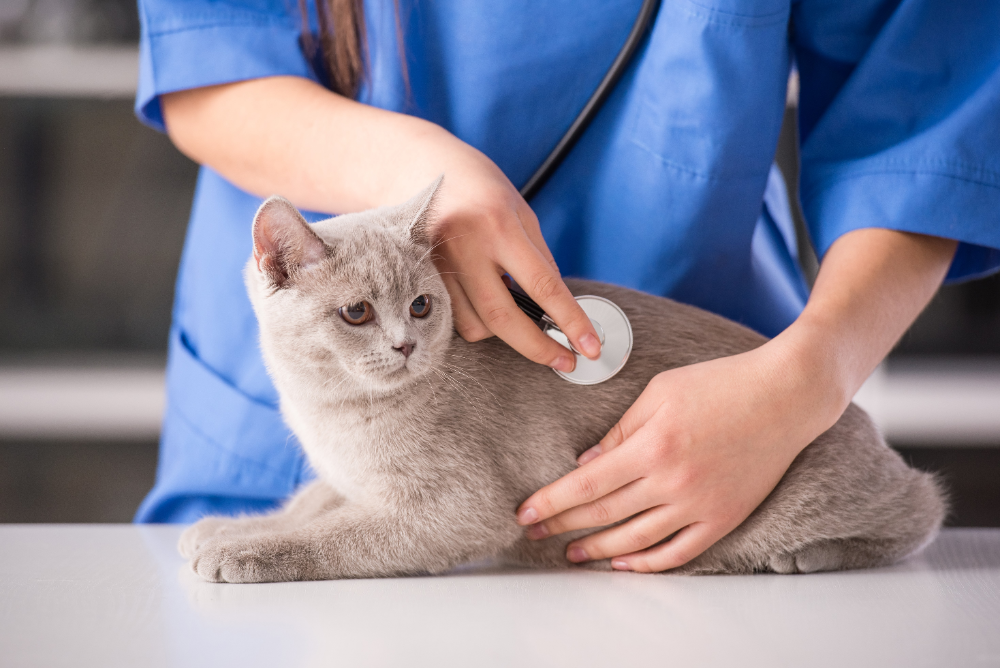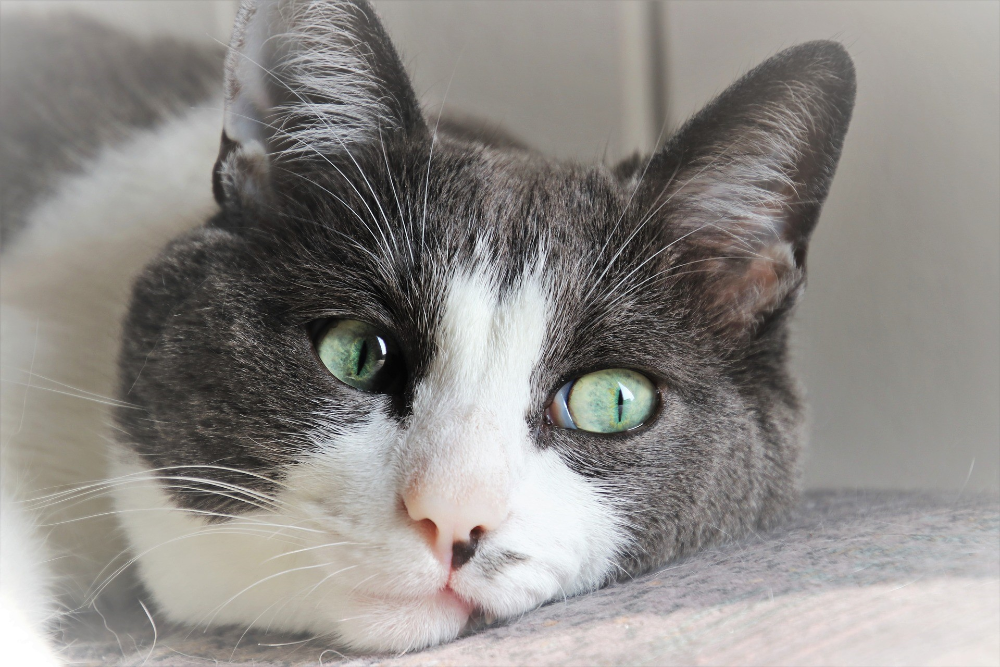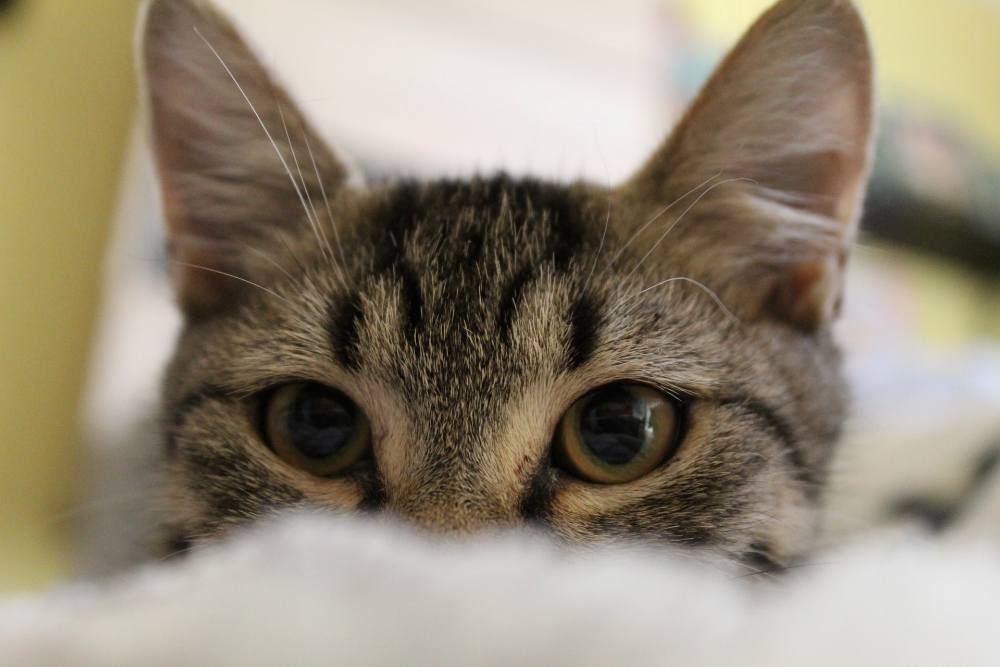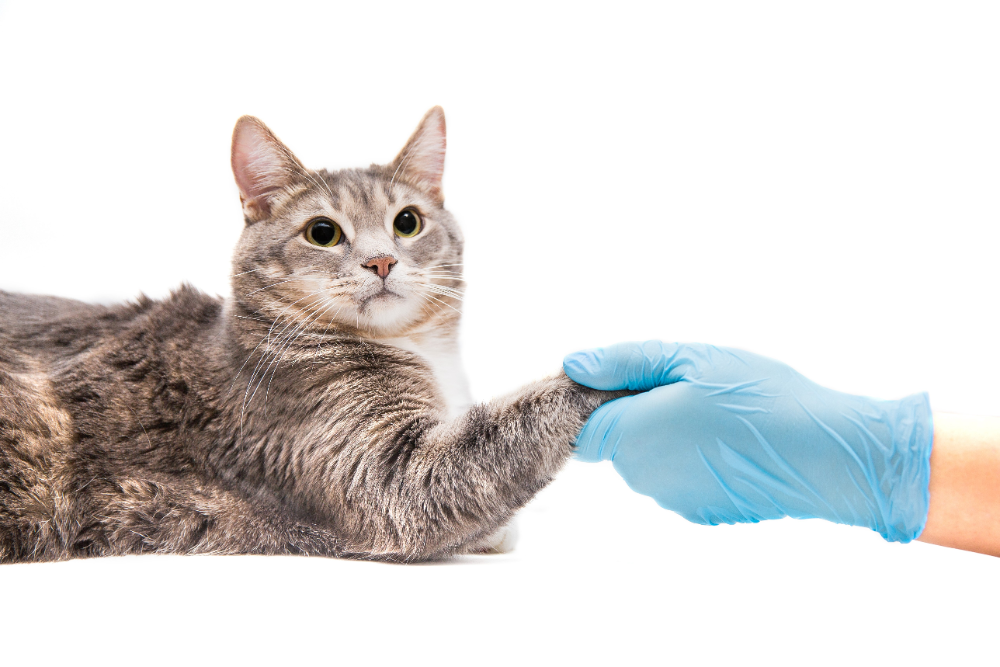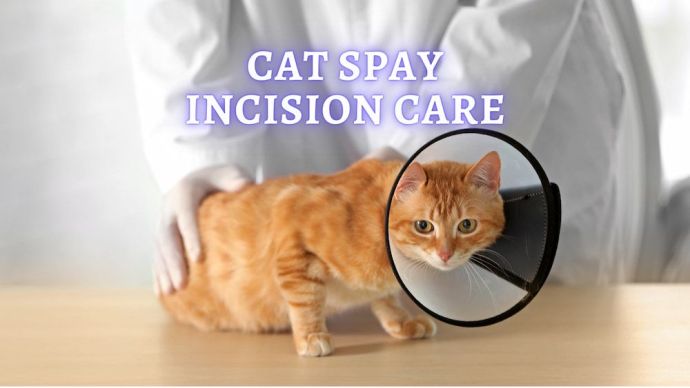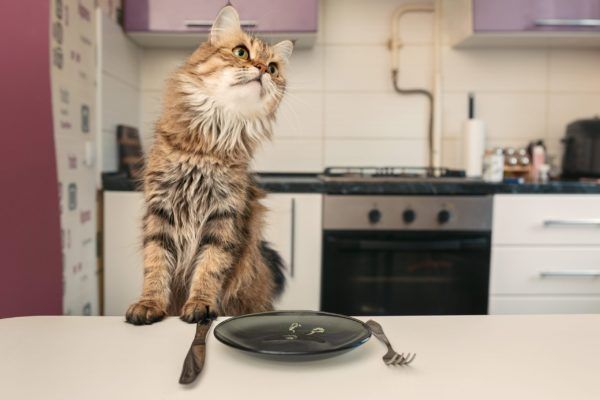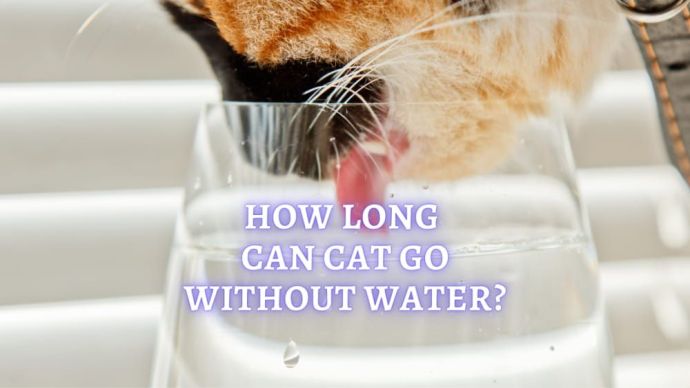Chronic Kidney Disease (CKD) in Cats (Vet Advice)
Written by:
Author: Dr. Joanna De Klerk
Dr. Joanna de Klerk is a professional Clinical Veterinarian. Member of the Royal College of Veterinary Surgeons UK and a member of the South African Veterinary Association. Graduated with a Master of Science in Tropical Animal Medicine in 2018. Professional author, she has been writing in scientific journals, and also several book series. Joanna loves to enjoy time with her young daughter and family in her free time.
View all 10 articlesLearn about our editorial process and veterinary review board.
Viewed: 1050
Updated on: 05/10/2023
One of the most common problems that cats develop in old age is chronic kidney disease, also known as CKD. It can be debilitating and life-threatening due to the many roles that the kidneys perform in the body; therefore, catching it early will ensure that your cat has the best possible prognosis for the future.
What is the function of the Kidneys in Cats?
The kidneys play multiple vital roles within the body. Without them, it would be impossible to live. Here are some of their roles:
- Waste product filtration: Waste products from the body’s metabolism, toxins, medications, excess minerals, and excess water are all filtered to create urine. Without this process, toxins build up in the body and can reach dangerous levels, which can lead to debilitating side effects.
- Blood pressure control: This organ produce hormones that regulate blood pressure. This is done by contracting or opening up the major blood vessels that run via the kidneys. If the kidneys cannot send the signals to the blood vessels, they do not keep this tightly in check, which has a major impact on blood pressure. As a result, the blood pressure increases dramatically.
- Red blood cell production: A hormone called erythropoietin is produced by the this organ, which stimulate the bone marrow to produce red blood cells. These are really important for transporting oxygen around the body to allow cells to subsequently produce energy. Lack of erythropoietin can lead to anemia.
What is chronic kidney disease (CKD)?
CKD is a slow age-related degeneration. With degeneration comes a loss of function. Chronic kidney disease eventually triggers failure, where the kidneys can no longer cope with their physiological roles. However, the kidneys can still maintain relatively proper function until they are almost 70% destroyed, and therefore sometimes it is difficult to realize the kidneys are not functioning at their full capacity until it is too late. There are several stages of CKD before failure, which is discussed further on.
What are the symptoms of a Cat with Kidney Failure?
Symptoms of a cat with kidney failure can be variable, from subtle to life-threatening. They include:
- Polyuria and polydipsia: Also known as PU/PD, these mean excessive urinating and excessive drinking. Excessive urination does not mean the kidneys are working well, it means the this organ have lost control of filtering water appropriately. Excessive drinking then happens to try to replace the fluid loss.
- Decreased appetite and weight loss: When the kidneys don’t work well, the urea level in the blood increases, which leads to nausea. Chronic lack of appetite leads to dramatic weight loss.
- Vomiting: When nausea becomes too much, vomiting can also happen.
- Mouth ulcers and bad breath: Ulcers come about from the increased urea concentrations in the blood, which also leads to an ammonia-like smell on the breath.
- Bladder infections: Because so much water is lost in the urine, the urine becomes diluted, decreasing its bacterial fighting abilities.
- Lethargy and an unkempt coat: Due to a general unwell feeling, a cat with failure will seem lethargic, dull, and will not groom himself like he used to, resulting in a poor-quality coat.
READ MORE: How long can a Cat survive without Water
How do I treat chronic kidney disease (CKD)?
Once your vet has established the severity of the CKD through a series of tests such as blood tests, urine tests, and ultrasound scans, he will prescribe an appropriate treatment for your cat. CKD is classified into five stages:
- Stage 1: Kidney damage but normal function (>90% function)
- Stage 2: Mild loss of function (60-89% function)
- Stage 3a: Mild to moderate loss of function (45-49% function)
- Stage 3b: Moderate loss of function (30-44% function)
- Stage 4: Severe loss of function (15-29% function)
- Stage 5: Kidney failure (<15% function)
Depending on the stage of kidney failure, your vet will prescribe different treatments. There is a wide range of medications to increase the function, increase the production of red blood cells, and decrease blood pressure, but while these all treat the symptoms, they do not reverse the kidney damage.
All cats with CKD should eat a special diet formulated for cats with disease. These diets are low in phosphorus and protein, which can cause increased stress on poorly functioning kidneys. Protein exacerbates inflammation in the kidneys and increases damage further, while phosphorus backs up in the blood to dangerous levels, which can influence other electrolytes too. Diets are also usually enriched with omega oils, which are natural anti-inflammatories and improve function. Some vets will also prescribe a phosphate-binding supplement to further decrease the phosphate levels in the body by binding excess phosphates in the intestinal tract so that they cannot be absorbed.
For cats in the later stages of disease, intravenous fluid therapy may be needed to increase the filtration of the kidneys and remove backed-up toxins in the blood. Once stabilized, sometimes vets will teach owners how to give injections of fluids subcutaneously (under the skin) at home, to improve the filtration of the kidneys in a less stressful environment than a veterinary hospital.
The stage of disease will determine the outcome of the treatment, and in general, there are three possible outcomes:
- The kidneys’ function will improve and continue functioning at this level for weeks, months, or even years (early stages).
- The kidneys’ function will improve, but as soon as treatment stops, it will decline again (middle stages).
- The function will remain weak, and treatment aims to simply improve the quality of life (end stages).
It is important to be realistic about the treatment outcomes.
How long does a cat live with chronic kidney disease and kidney failure?
The prognosis for cats with CKD depends on how early it was recognized, the treatments and diets provided, and the cat’s age. Most signs of CKD start at approximately 10 to 14 years of age, which is already in the later life of a cat. Cats can live with CKD for a long time, though if diagnosed early. Some cats can even live up to four years before they reach the stage of kidney failure, or may also pass away from something else.
Is kidney failure in cats a painful death?
Cats do not always express that they are in pain, so it is difficult to fully understand whether they are suffering or not. However, based on the knowledge of kidney failure in humans, the kidneys’ actual failure does not directly cause pain. Nevertheless, kidney failure can cause painful secondary symptoms, such as mouth ulcers.
Despite pain not being the main symptom of kidney failure, many of the other symptoms, such as nausea, are very unpleasant, and therefore, it is essential to consider the quality of life of the cat. Quality of life is how most vets judge whether it is time to consider euthanasia. It is best decided by the owner under the guidance of a vet; however, the following points are considered:
- Can the cat perform their regular daily routine?
- Is the cat eating normally and maintaining weight?
- Is the cat still wanting to interact with people?
- Can the symptoms be improved?
Most cats with CKD will eventually have to be euthanized to end their suffering as CKD is a prolonged disease, resulting in a long-term loss of quality of life towards the end.
Can a Cat recover from Kidney Disease?
CKD causes irreversible damage to the kidneys, so any cat experiencing CKD cannot recover from it. However, the aim of treatment is to improve the function of the kidneys; therefore, with early and effective treatment, it may seem that there is some improvement.
However, CKD is not the only cause of damage or failure. Acute kidney disease can happen suddenly over the period of days and weeks in cats of any age. Severe disease is usually the result of poisons, such as plants, household chemicals, and medications, pelvic or bladder trauma, rapid dehydration, infections, and bladder blockages. If picked up early enough, and treatment is swift, acute disease can be treated and reversed, unlike CKD.
READ MORE: Signs of Dehydration in Cats
Conclusion
If you are worried about some symptoms that your cat may have been experiencing, or you have a cat diagnosed with CKD, do not be afraid to have a discussion with your veterinarian to ensure your cat gets the best care and early diagnosis, as this will ensure your cat will receive the best outcome.
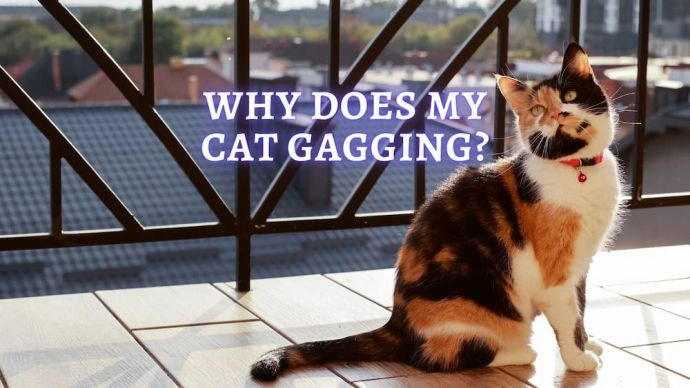 Cat Veterinary Tips Cat Gagging: Why Does My Cat Keep Gagging But Not Throwing Up? (Vet Advice)
Cat Veterinary Tips Cat Gagging: Why Does My Cat Keep Gagging But Not Throwing Up? (Vet Advice) - 1809
- 0
 Cat Veterinary Tips Cat Stomach Gurgling: Vet Advice on Why is Your Cat Stomach Gurgling?
Cat Veterinary Tips Cat Stomach Gurgling: Vet Advice on Why is Your Cat Stomach Gurgling? - 36469
- 4
 Cat Veterinary Tips Dehydration in Cats: Causes, Signs, Symptoms, and Treatment
Cat Veterinary Tips Dehydration in Cats: Causes, Signs, Symptoms, and Treatment - 411
- 0
 Cat Care Why Does My Cat Attack My Legs? 10 Reasons Why and What To Do About It (Vet-Approved Advice)
Cat Care Why Does My Cat Attack My Legs? 10 Reasons Why and What To Do About It (Vet-Approved Advice) - 46013
- 21
 Cat Veterinary Tips Cat Stomach Gurgling: Vet Advice on Why is Your Cat Stomach Gurgling?
Cat Veterinary Tips Cat Stomach Gurgling: Vet Advice on Why is Your Cat Stomach Gurgling? - 36469
- 4
 Cat Veterinary Tips My Cat Lost its Voice: Can Cats get Laryngitis? (Vet Advice)
Cat Veterinary Tips My Cat Lost its Voice: Can Cats get Laryngitis? (Vet Advice) - 23554
- 13









